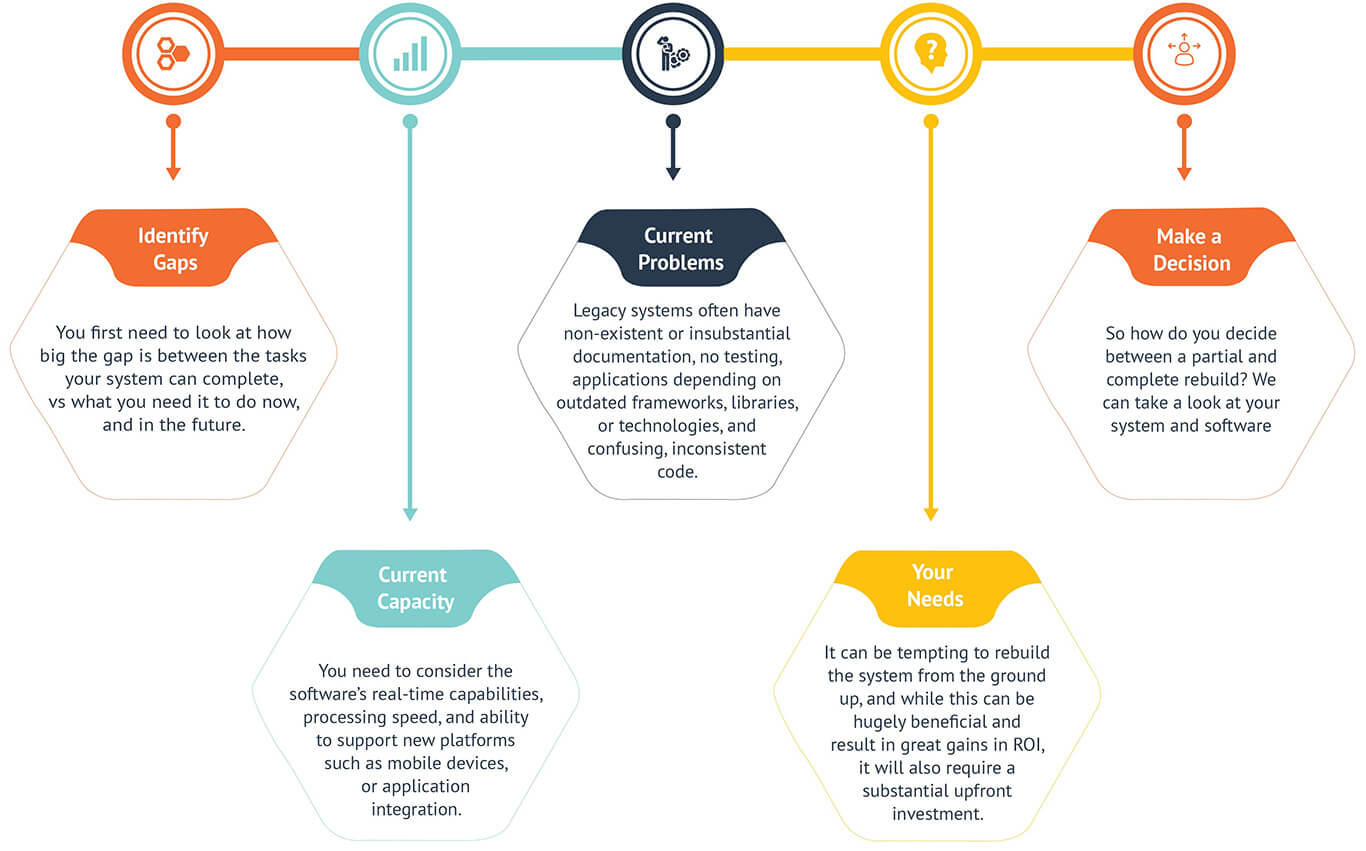Companies around the world are currently working with ageing, for long term complex systems with older hardware systems based that are expensive to maintain and unable to support most new business initiatives with newer technologies. And the problem continues to worsen, with many organisations spending a huge share of their budgets just on maintenance for their existing legacy systems.
If you’re like most business owners, you’ll probably only consider renovating or rebuilding your legacy software system if it begins directly impacting ROI.
But the internet is placing increasing stress on computing systems, such as high-bandwidth demands and real-time order processing, which many legacy applications and systems simply can’t handle as like modern systems.
If it was easy to leave old legacy systems, most business owners and CIOs would have made the change years ago. Most businesses are aiming to keep their legacy software systems working as long as they’re useful. However, there comes a point when the software has to be rebuilt for application modernization. The good news? This much-needed change can result in better workflow and a surprising ROI, although it can be difficult to find which option (cost of replacing or modifying) is the best solution for your business process.
Legacy software is the kind of software that the latest developers won’t play with. Unfortunately, it’s more difficult to maintaining legacy systems compared to new ones due to high operating costs, because there are fewer skilled resources available to work on it, and these developers want to stay relevant instead of working on “dying technologies” due to a lack of support for a new system or application leads to security breaches. This means that it can be far more costly to keep older systems working, compared to the maintenance costs over time once a system has been upgraded.
While functionality is an important component, you’ll also need to consider the software’s real-time capabilities, processing speed, and ability to support new platforms such as mobile devices, or application integration.
Often, investment is poured into customer engagement programs and digital transformation strategies, while behind the scenes, businesses are relying on legacy systems that uses outdated technologies were built by developers who couldn’t have predicted the demands that would one day be placed on the newer systems.
It’s important to remember that your system has a fixed lifespan. The main factors that determine this lifespan are the relevance of the technology it’s using, and the cost and availability of the resources required to work on it.

So how do you approach a legacy system rebuild?
First, you need to identify the problems with your legacy system to avoid data loss and fix the security measures loop holes.
Legacy applications will often have a few identifying characteristics to watch out for, including non-existent or insubstantial documentation, no testing, applications depending on outdated frameworks, libraries, or technologies, and confusing, inconsistent code.
In human terms, this means that your team is working for your system, rather than your system working for them. If your tech team is spending hours fixing bugs before they can add a feature, or your development team struggles to make changes or fix knock-on effects when trying to deliver the best possible features, you have a legacy problem.
If the idea of implementing a helpful new feature gives you a stress response, or you’re continually saying “no” to upgrades since you know the system won’t cope with constantly evolving technologies, it’s also highly probable that you have a legacy issue.
This will directly impact your ability to hire and retain talent, since no one really wants to work with a system that’s frustrating and time-consuming.
Next, you need to understand exactly what it is you need. It can be tempting to rebuild the system from the ground up, and while this can be hugely beneficial and result in great gains in ROI, it will also require a substantial upfront investment.
As long as your systems are still operational before it get as outdated software, there will usually be enough value within your system to make some of it worth saving. For this reason, it may make sense to consider only modernising the parts that bring the most value to your business to save time and money.
For some business owners, however, it may be worthwhile to completely rebuild your systems with custom software that is tailored to your business needs (both now, and in the future). A custom software solution may offer immediate, solid improvements on your legacy system.
So how do you decide between a partial and complete rebuild? We can take a look at your system and software needs, and give you the best possible software modernization advice for your situation. Get in touch today to learn more about how we can help you with your legacy system rebuild.




